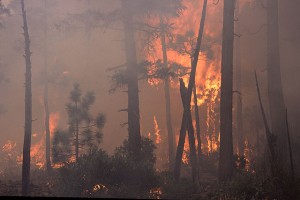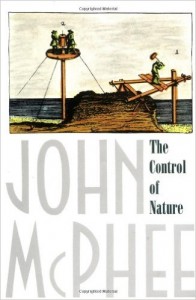Earlier this week I posted a blog entry noting the large number of forest fires in the Pacific Northwest. Numerous articles noted that the number is far above the long-term average. However, Cliff Mass of the University of Washington has a slightly different take on it.
In a blog posting today, he notes that while the number of fires is above average, most of the fires are very small and the total area covered this year is much less than normal. He attributes this to the lack of thunderstorms this year due to the dry conditions. Most of the large wildfires that the PNW sees in a bad year are triggered by lightning, and with no thunderstorms, most of the fires are in more easily accessible places and are triggered by cigarettes, campers, and other causes in more well-traveled areas which firefighters can easily reach before the fires grow. He does warn that if the pattern shifts and allows more thunderstorms to develop, even if they produce minimal rain, the lightning could be enough to trigger massive fires, since the vegetation is very dry and easy to burn.
How will the El Nino affect conditions in the west this winter after all the fires? One of my favorite books, “The Control of Nature” by John McPhee, discusses the impact of land-clearing fires on conditions in rainy winters following the fire seasons. El Nino is expected to bring much-needed rain to California and the West Coast. However, the bare ground where fires occurred is ripe for development of mud slides which can wipe out homes and businesses in the areas below the fire-damaged areas. I expect to hear a lot of reports of mudslides in California this winter in the news.

